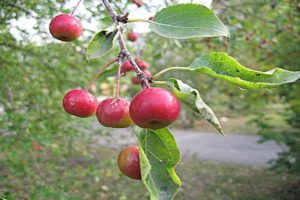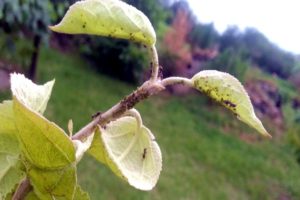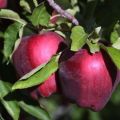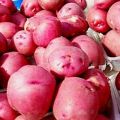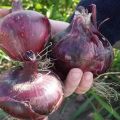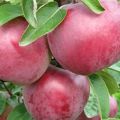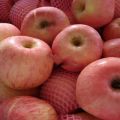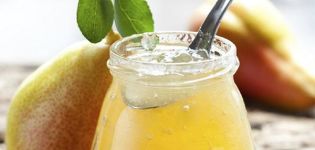Description and characteristics of Red Chief apples, cultivation and care
The Red Chief apples were created by breeders from North America. Currently, the hybrid is widespread in Russia. The Red Chief apple tree belongs to high-yielding varieties that are suitable for growing in almost any climatic conditions.
History of culture breeding
The apple tree of the Red Chief variety belongs to the American hybrids. This hybrid was introduced in 1914. The parent varieties are Grims Golden and Golden Reinet apple trees. Some time after all the necessary procedures were carried out, the hybrid was zoned.
Pros and cons of the variety
The advantages of the American Red Chief hybrid:
- Term entry into fruiting.
- Sizes of apples.
- Duration of storage after harvest.
- Immunity to powdery mildew.
The disadvantages of the hybrid include low resistance to scab and spotting, as well as difficulties in growing in the northern regions.
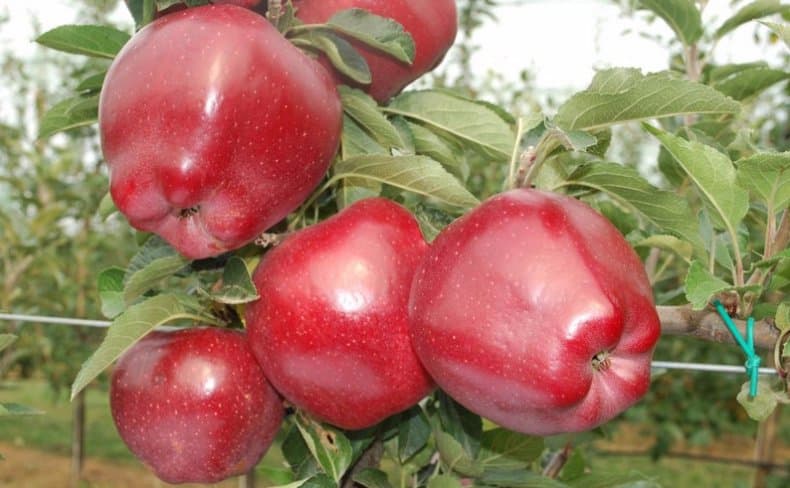
Specifications
To understand whether the Red Chief variety is suitable for planting in the garden or not, it is necessary to study all the technical characteristics of the hybrid.
Dimensions of an adult tree
The description of the Red Chief apple tree should start by studying the size of the plant. The tree of this variety is medium-sized. An adult plant reaches a height of 5 to 7 m. The crown is of the correct oval shape.
Annual growth
The growth of the tree per year is average, during this time the apple tree grows by about 5-8 cm.

Resistance to frost and disease
Relatively high resistance to powdery mildew and fire blight, but low to scab.
Depending on the strength of the immunity, the plant can be affected by the moth.
Average frost resistance. Growing a Red Chief in northern latitudes will be problematic, the tree may not withstand severe winters. The apple tree survives frosts down to -25 degrees.
All about the harvest
Another important characteristic that concerns all gardeners when choosing an apple variety is yield. Any summer resident wants to find a variety that requires a minimum of care, but which at the same time gives a good harvest.
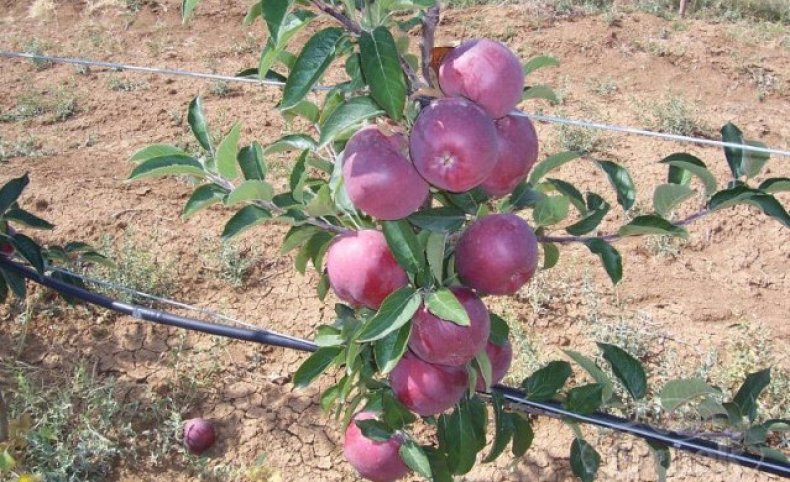
First fruiting period
A characteristic feature of the Red Chief is early maturity.After planting the seedling, the tree begins to bear fruit in the 2-3rd year. The harvest is not very abundant at first, but as the tree grows, the yield increases.
Frequency and amount of harvest
Red Chief belongs to large-fruited high-yielding hybrids. In the first few years, up to 30 kg of fruits are harvested from the tree. Subsequently, the yield can increase up to 130 kg. Fruiting is annual.

Collection and use of fruits
The plant belongs to winter hybrids. The first ripe apples will not be picked from the tree until September. Mass harvesting takes place in the last days of September-October. On average, the weight of fruits is about 190-370 g. Apples are versatile in use. They are used for making jam, jam, used for baking and consumed fresh. The harvested crop can be stored for up to 7 months.
Tasting Apples
The palatability of apples is excellent. The score is 4.7 out of 5. The flesh of apples is juicy and grainy, sweet in taste.
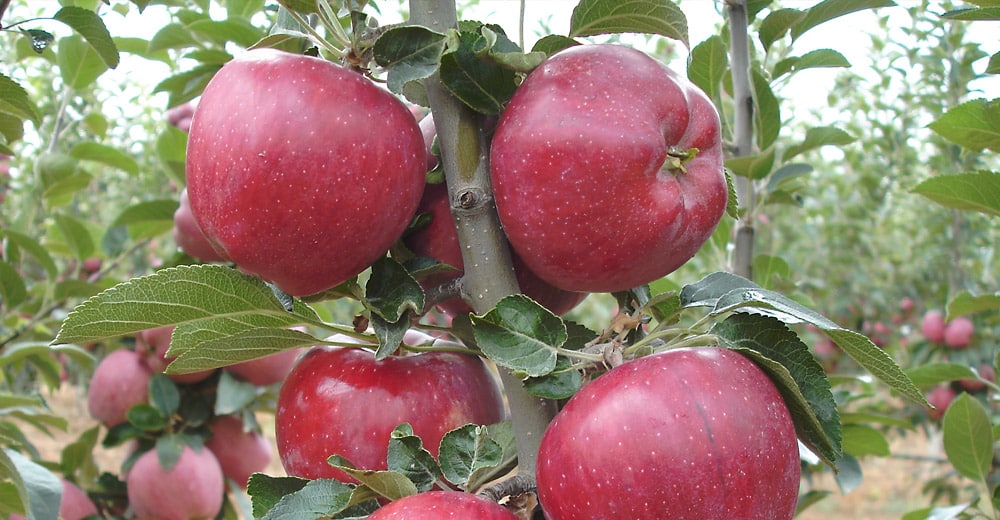
How to plant an apple tree
The yield of the apple tree depends on the correct planting.
Preparatory activities
Before planting, a hole is dug for 2 weeks, the topsoil is mixed with manure, mineral fertilizers and ash. Then they fill the bottom of the pit with it. Immediately before planting, the root system of the apple tree is dipped in a liquid clay solution.
Seat selection
The apple tree prefers to grow in open sunny areas, on light and fertile soils.
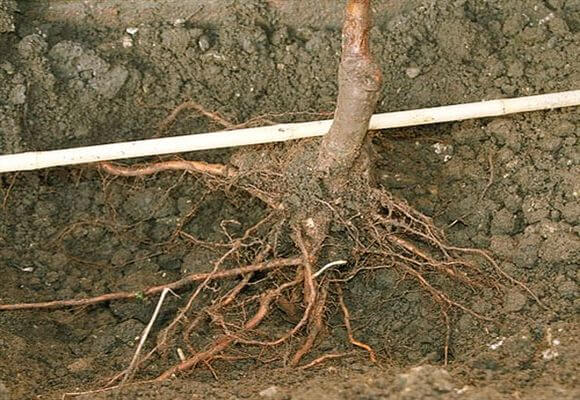
Disembarkation dates
In the spring, seedlings are planted after the threat of frost has passed. This is roughly the end of April - May. In autumn, planting is carried out in October, before the onset of cold weather.
Landing scheme and technology
The distance between other trees should not be less than 3 m.To plant a seedling, dig a hole 1 m deep and 70-80 cm wide.
Basic care activities
To obtain a good and stable harvest, it is not enough to comply with the rules of agricultural technology when planting a seedling. You need to pay attention to caring for the tree.
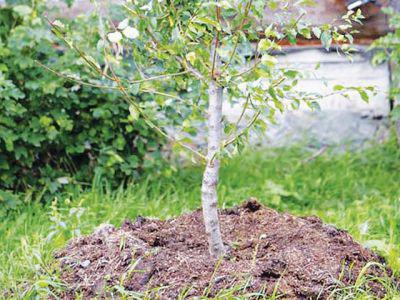
Watering frequency
The apple tree does not belong to moisture-loving crops and often does not have to be watered. 4 irrigations are enough per fruiting season:
- The first watering is done during the period of bud swelling.
- The second - with the onset of flowering.
- The third time the soil is moistened during the formation of ovaries.
- The last time was before the onset of frost in October.
It is not recommended to water the plants with cold water. This increases the risk of fungal infections.
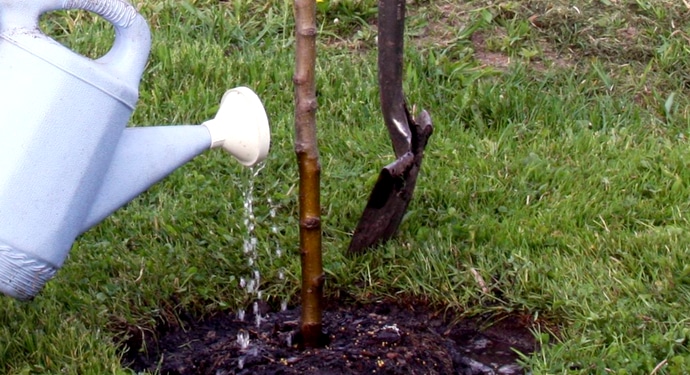
Fertilizer
In the first half of summer, nitrogen is introduced into the soil. Nitrogen-containing compositions include ammonium nitrate, urea or ammonium sulfate. Organic fertilizers are also applied to the soil.
During the fruiting period, the soil is fed with superphosphate and potassium dressings.
Loosening the soil
The soil is loosened to a depth of 15 cm before each watering.
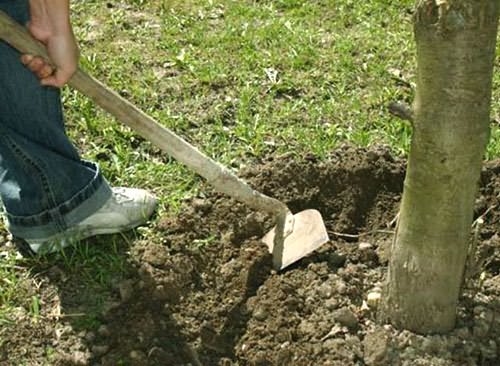
Crown formation
The tree is formed in the 2-3rd year after planting the seedling. In the spring, young shoots are cut down, some of the branches are cut off, leaving 3-4 skeletal ones. Dry branches are removed in autumn.
Preventive treatment
In the spring, the apple tree is sprayed with Bordeaux liquid or other copper-containing preparations. If necessary, spraying is repeated during the flowering period.
Preparing the tree for winter
Before the onset of cold weather, the soil around the trunk is mulched. Also, so that rodents do not gnaw the bark, it is smeared with lime or twisted twigs around the trunk.
